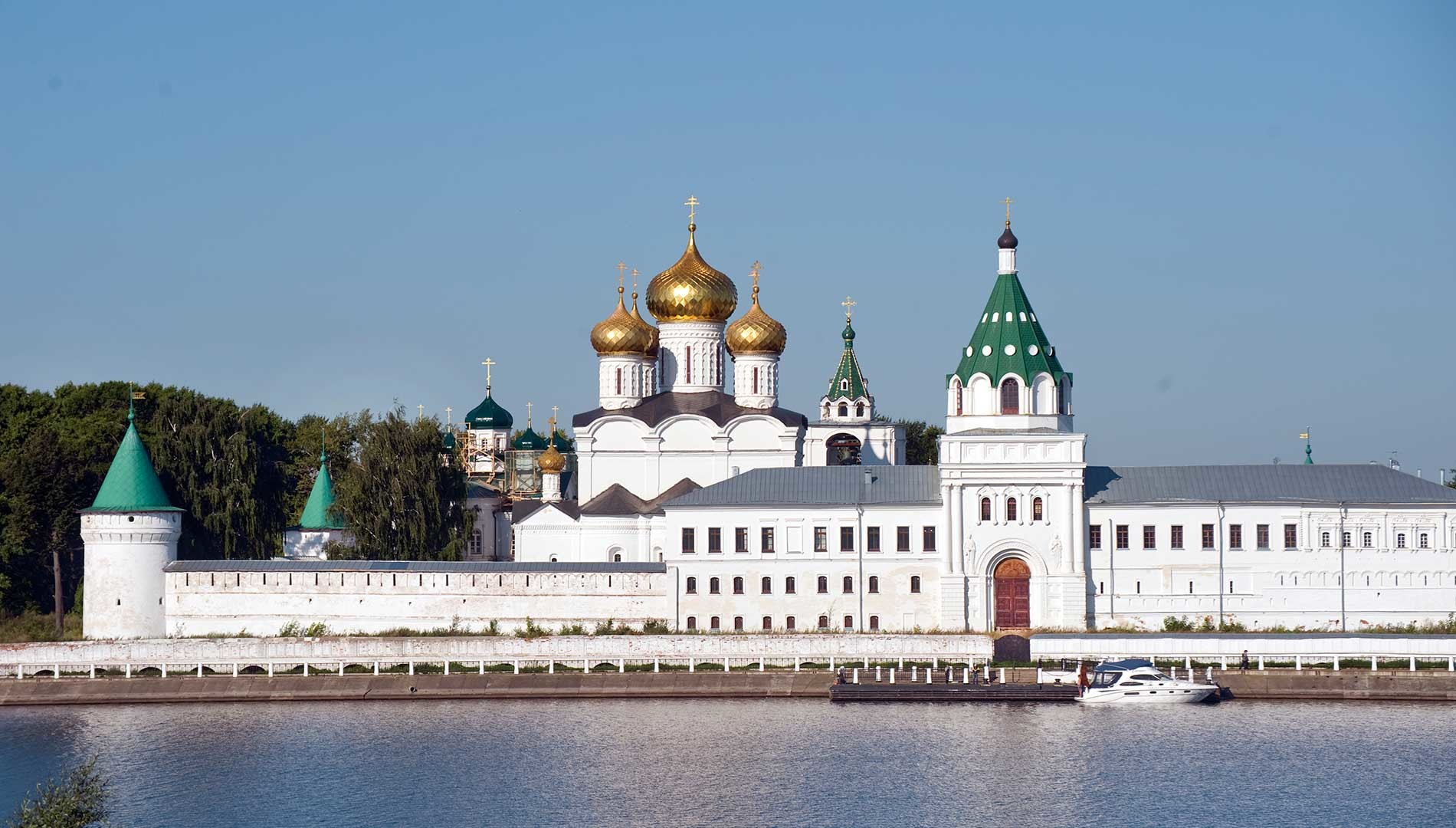
Trinity-Ipatiev Monastery, east view across Kostroma River. From left: Water Tower; Cathedral of Nativity of the Virgin; Trinity Cathedral; bell tower; Archbishop's Cloisters with Gate Church of Sts. Chrysanthus & Daria. Aug. 13, 2017.
William BrumfieldAt the beginning of the 20th century, the Russian chemist and photographer Sergei Prokudin-Gorsky devised a complex process for vivid, detailed color photography (see box text below). His vision of photography as a form of education and enlightenment was demonstrated with special clarity through his photographs of architectural monuments in the historic sites throughout the Russian heartland.
One of these sites was Kostroma. Although smaller than its neighbor Yaroslavl, Kostroma rivaled the better-known town for the beauty of its churches and the fame of its Trinity-Ipatiev Monastery, a center of medieval Russian chronicle writing. Prokudin-Gorsky made two trips to Kostroma, the first in 1910 and again in 1911 for work in the monastery archives.
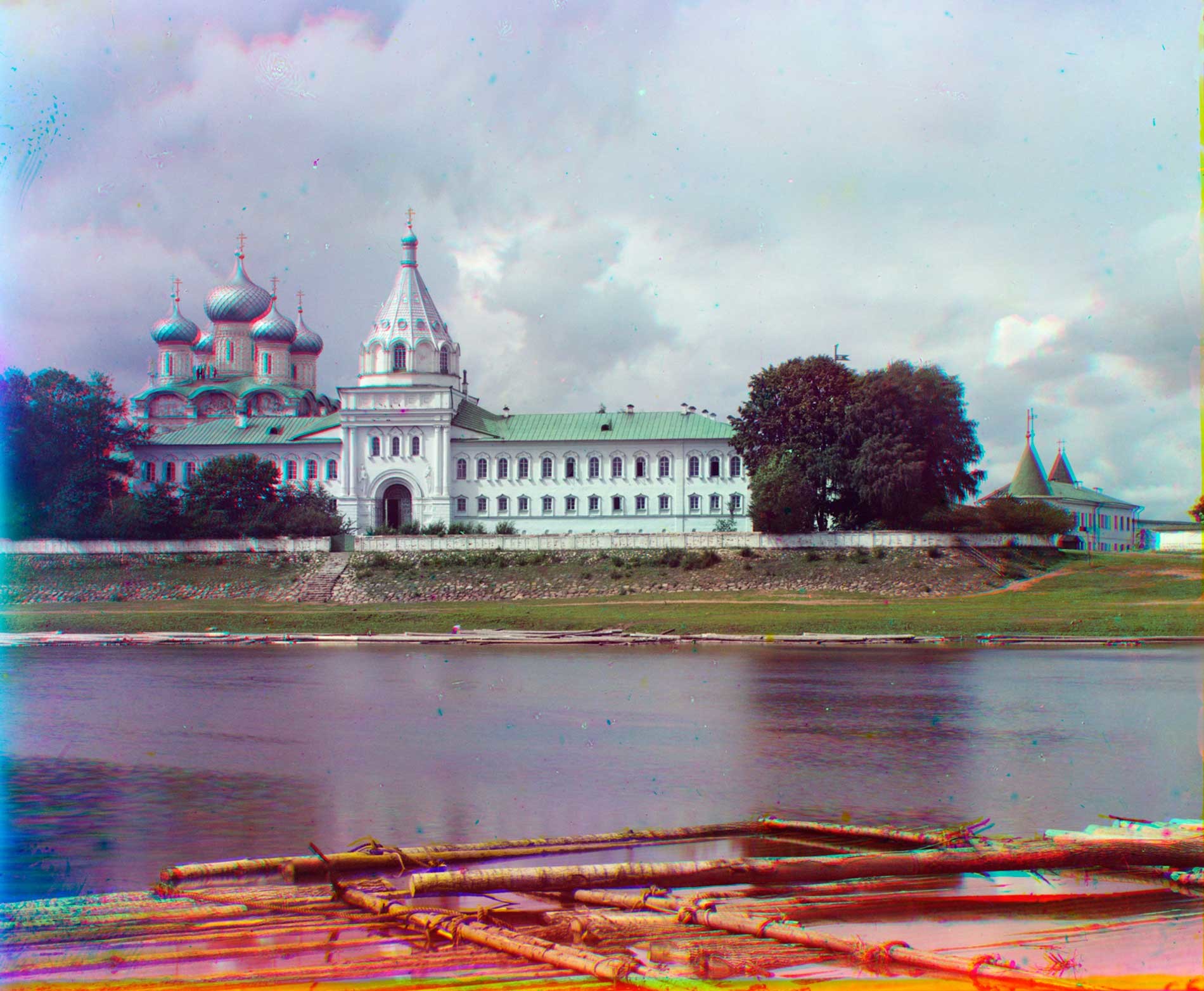
Trinity-Ipatiev Monastery, east view across Kostroma River. From left: Trinity Cathedral; bell tower; Archbishop's Cloisters with Gate Church of Sts. Chrysanthus & Daria; Powder Tower. Summer 1911.
Sergei Prokudin-GorskyBy the time of Prokudin-Gorsky’s visit, the Trinity-Ipatiev Monastery was one of the most renowned monasteries in Russia. During the 16th century, the monastery’s main benefactors were Dmitry Godunov and his nephew, future tsar Boris Godunov (1552-1605). The
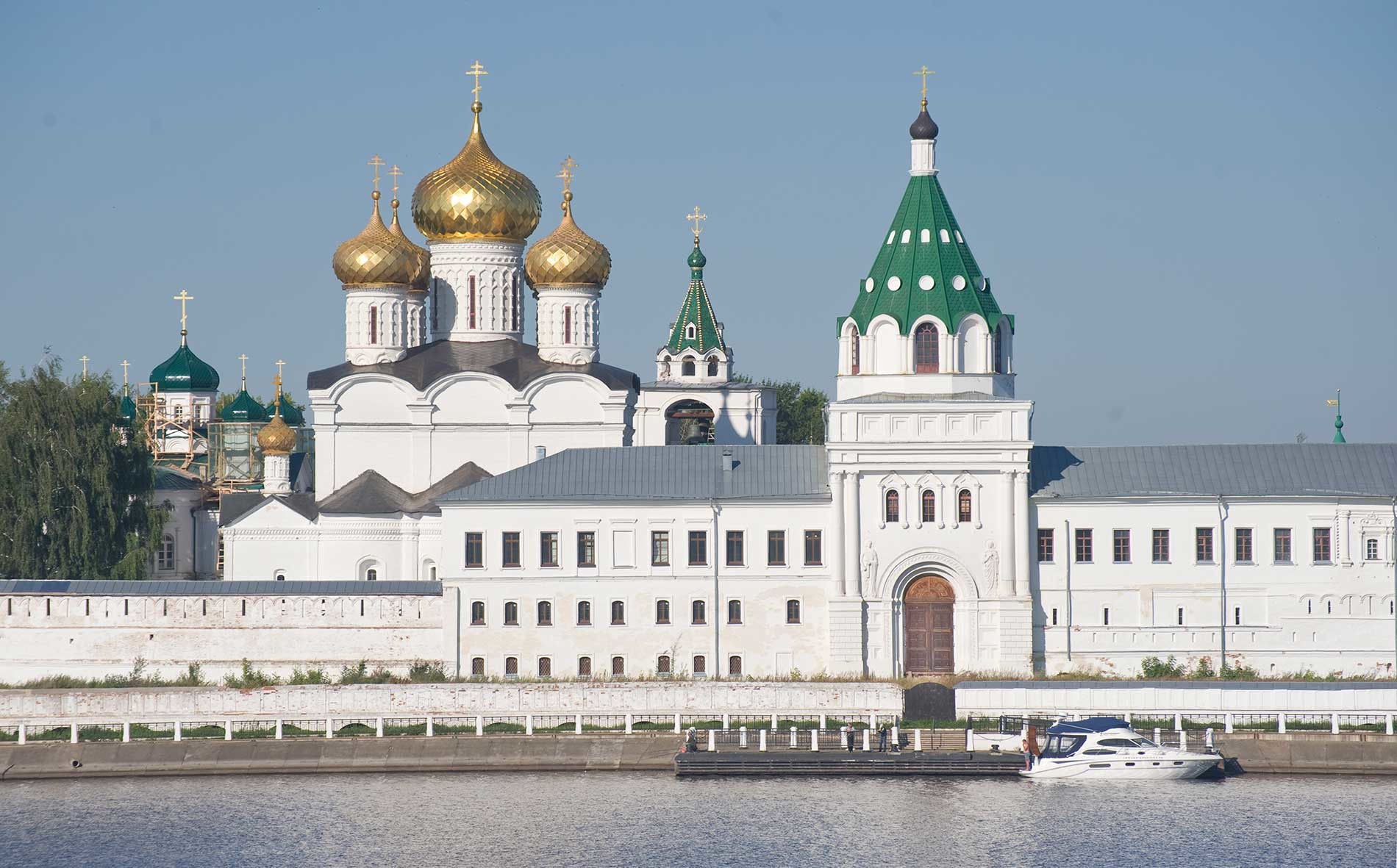
Trinity-Ipatiev Monastery, east view across Kostroma River. From left: Cathedral of Nativity of the Virgin; Trinity Cathedral; bell tower; Archbishop's Cloisters with Gate Church of Sts. Chrysanthus & Daria. Aug. 13, 2017.
William BrumfieldOnce in Moscow, he accepted Christianity and the Christian name Zakhary (Zacharius). As a sign of favor, Ivan Kalita gave him extensive lands near Kostroma. According to this version, Zakhary/Chet was
According to another version, the monastery was founded in 1275 by Prince Vasily Yaroslavich (1236 ?-1276), brother of Grand Prince Alexander Nevsky (1220 ?-63). In this
By
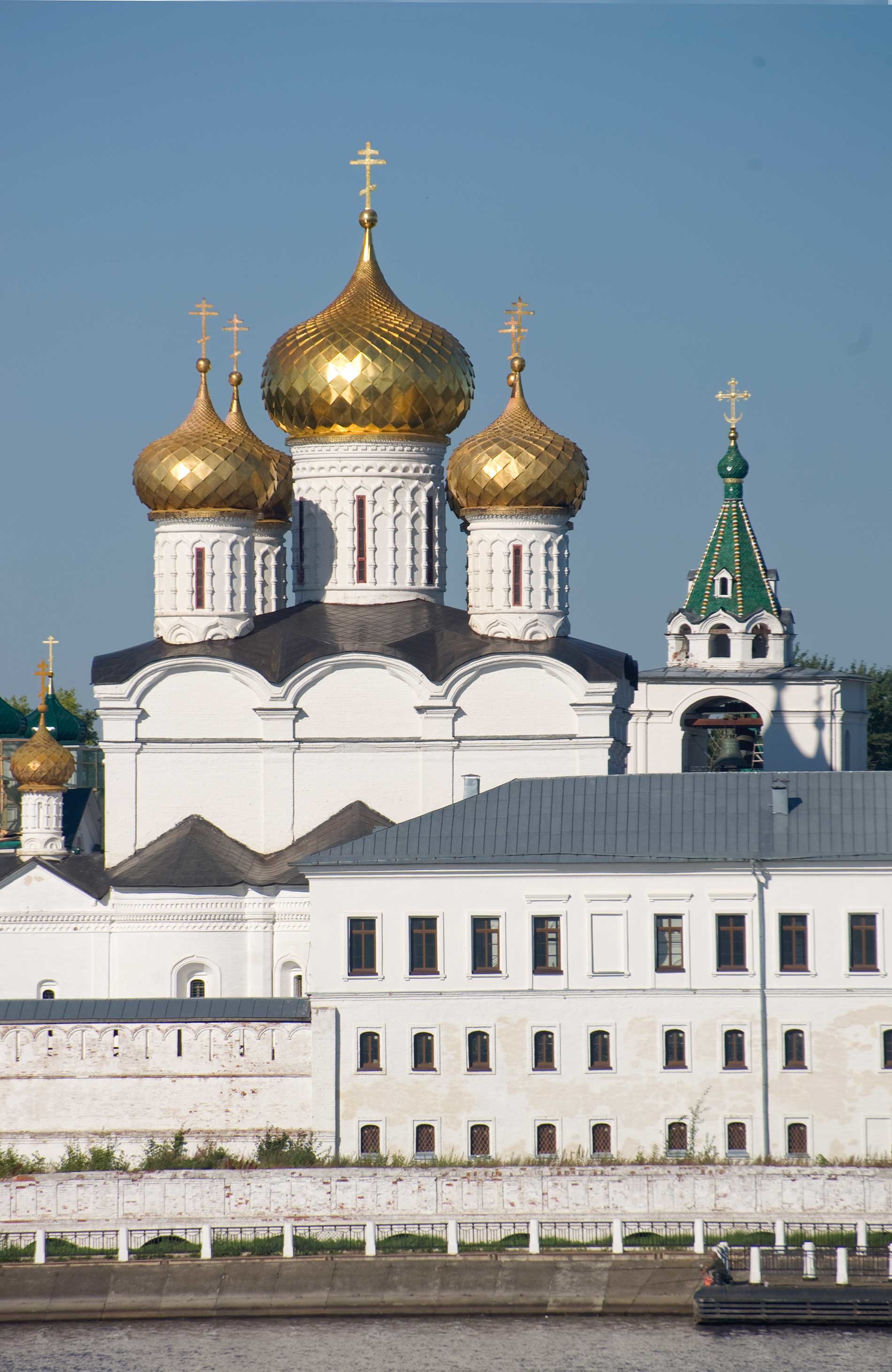
Trinity-Ipatiev Monastery. Trinity Cathedral, east view across Kostroma River. Aug. 13, 2017
William BrumfieldIn his vendetta against the Romanovs, in 1600 Godunov sent Mikhail Nikitich Romanov to an agonizing death in Nyrob. That same year, Godunov exiled Mikhail’s’ brother, Fyodor Nikitich (1553-1633), and compelled Fyodor and his wife, Ksenia, to take monastic vows as Filaret and Marfa. Godunov’s death in 1605 led to the killing of his family by an enraged mob and ushered in a devastating period of social disorder, civil war and foreign intervention known as the Time of Troubles.
Each year brought new, competing claimants to the Muscovite throne. In 1610, Filaret, then a prelate in the Orthodox Church, was imprisoned by the Polish King Sigismund III for refusing to sign a treaty legitimizing the accession of his son Władysław IV to the Muscovite throne. (Filaret would return to Moscow only in 1619, after the Truce of Deulino.)
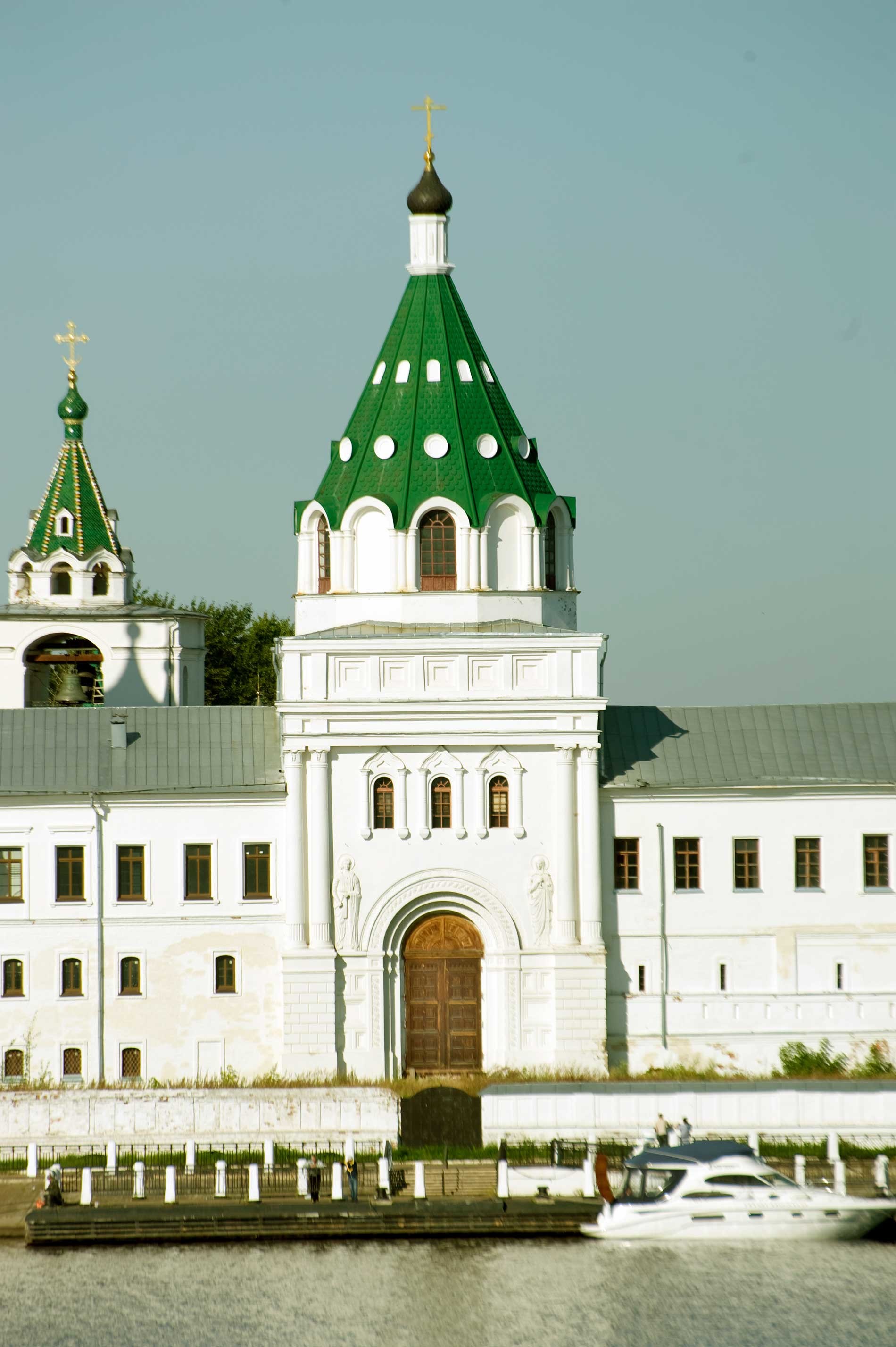
Trinity-Ipatiev Monastery, east view across Kostroma River. Archbishop's Cloisters with Gate Church of Sts. Chrysanthus & Daria. Aug.13, 2017.
William BrumfieldWith the ardent support of the Orthodox Church, Moscow and its Kremlin were ultimately recaptured from Polish detachments in late October 1612. Among those freed from the Kremlin was the small Romanov family, including Filaret’s wife (now known by her monastic name Marfa) and their 16-year-old son Mikhail.
Russia still remained in the throes of fighting and chaos, as armed bands of troops and marauders pillaged the country. In late 1612 Marfa and Mikhail — in effect fugitives in their own land — retreated to a Romanov estate near Kostroma and soon thereafter sought more secure shelter behind the walls of the Ipatiev Monastery.
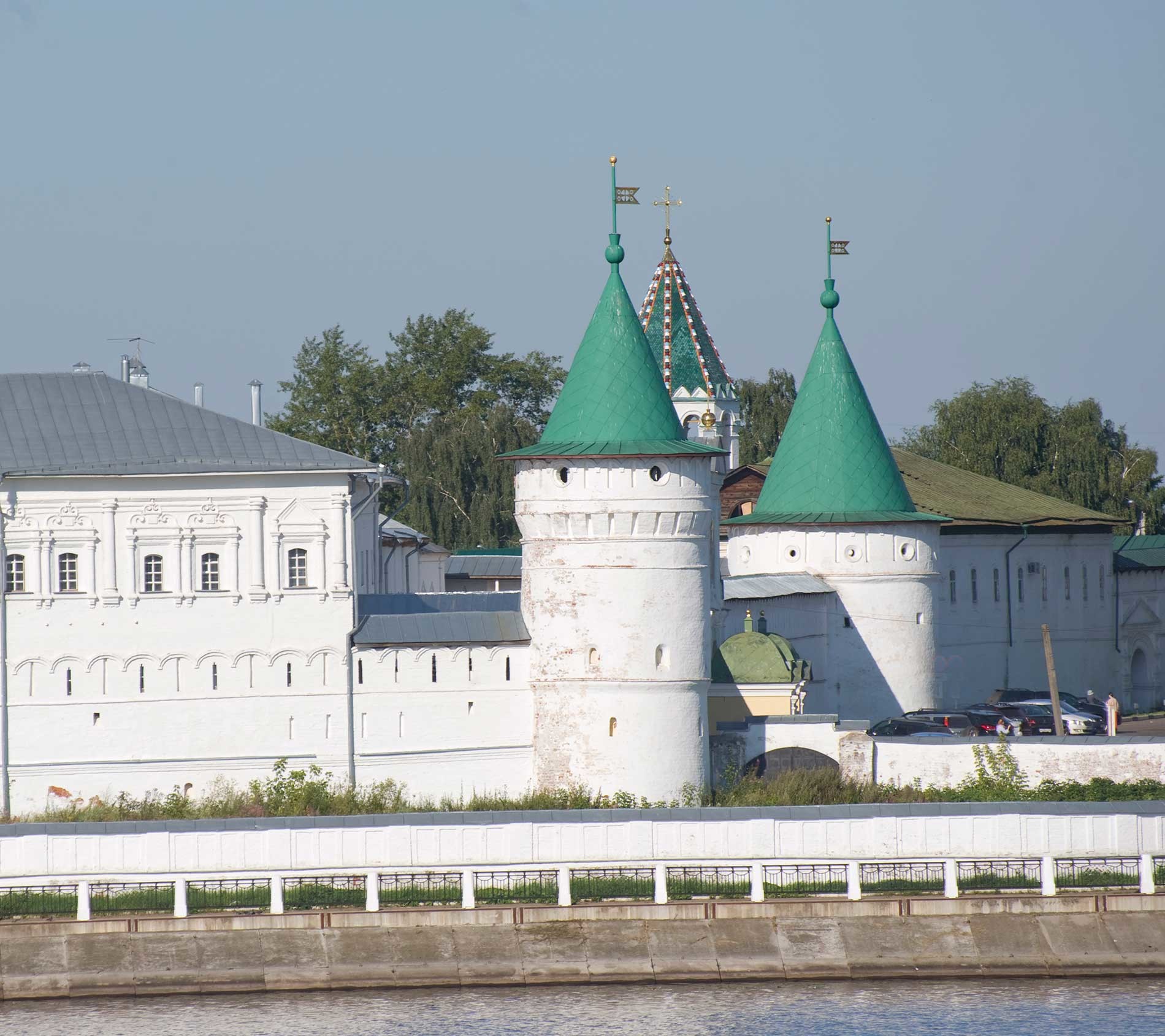
Trinity-Ipatiev Monastery, east view across Kostroma River. From left: Archbishop's Cloisters; Powder Tower; Green Tower (background); Catherine (North) Gate; Smithy Tower. Aug. 13, 2017.
William BrumfieldOn Feb. 21, 1613 (March 3 by the Gregorian calendar), Mikhail Romanov was elected to the tsar's throne by a national assembly (Zemsky
As stability slowly returned under Romanov rule in the 17th century, the Ipatiev Monastery received substantial donations acknowledging its role in the dynasty’s accession. Numerous buildings were added in the 17th through the 19th centuries. Already acquainted with the imperial family, Prokudin-Gorsky was drawn to the monastery in advance of the Romanov dynasty tercentenary in 1913. During his second visit, he photographed several relics associated with the solemn events of March 1613.
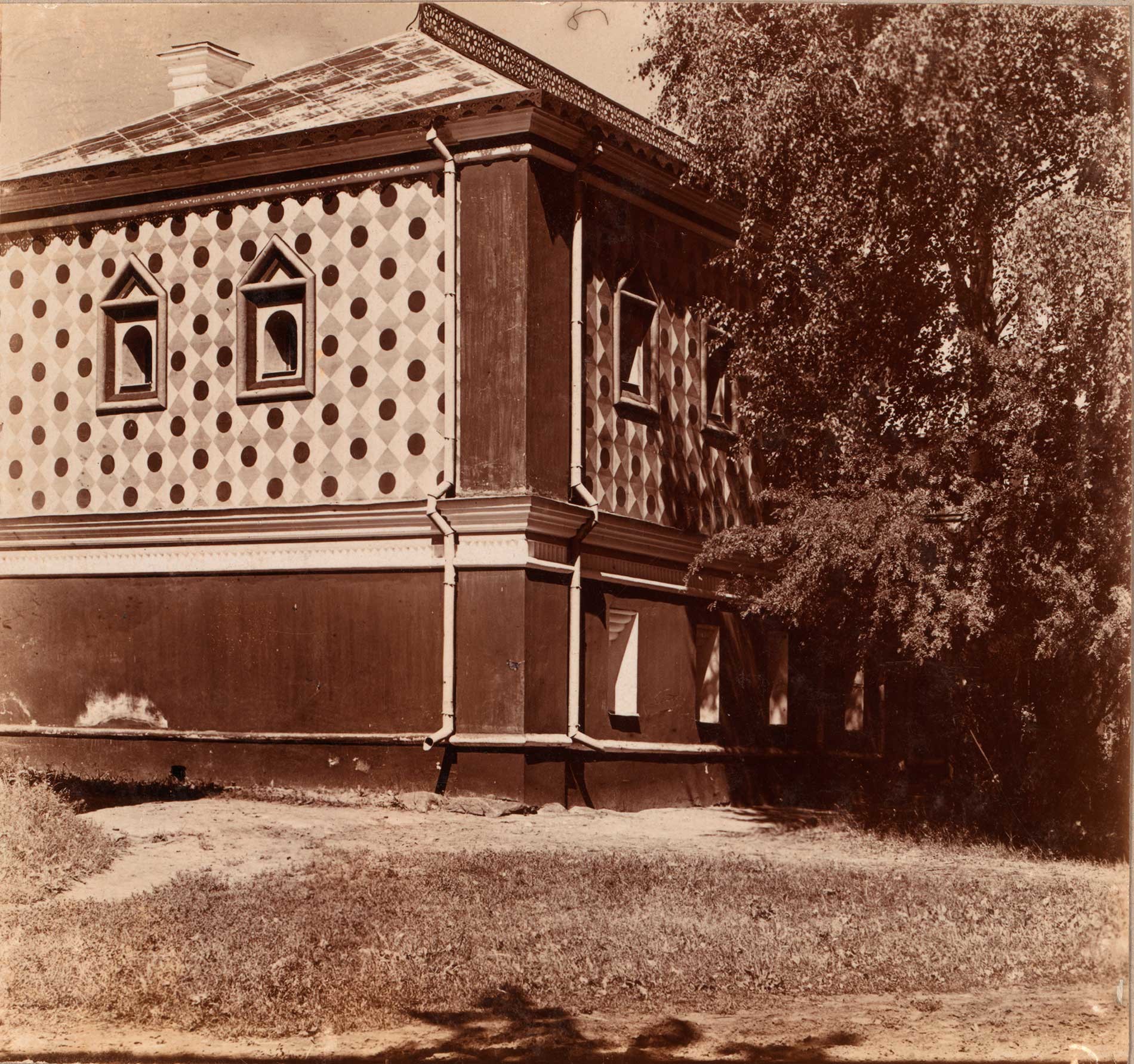
Trinity-Ipatiev Monastery. Romanov Chambers. Summer 1910.
Sergei Prokudin-GorskyProkudin-Gorsky’s photographs of the monastery include the east wall viewed across the Kostroma River near its confluence with the Volga. My photographs from a similar perspective show the same monuments over a century later. On the left is the upper part of the Trinity Cathedral, the monastery’s central shrine, rebuilt in 1650-52 and crowned with five gilded domes.

Trinity-Ipatiev Monastery. Romanov Chambers, east view. Aug. 13, 2017.
William BrumfieldThe center of this view is occupied by the large Archbishop’s Cloisters, part of which dates to the 17th century. An expansion of the building was completed in the late 1850s over the monastery’s east gate. Designed by Konstantin Ton, the leading church architect of the era, the building culminates in a 12-sided “tent” tower over the Church of Sts. Chrysanthus and Daria, 3rd-century Roman martyrs. On the right is the Powder Tower in the wall’s northeast corner. My photographs include a detailed view of the north wall towers.
During the 19th century, the memorialization of the monastery’s connections to the Romanovs assumed a national character. One of the main components of the commemoration was the renovation of the
The substantial reconstruction of what became known as the Boyar Romanov Chambers was undertaken by the architect Fyodor (Friedrich) Richter, who was at that time involved in a similar Romanov Chambers project near the Moscow Kremlin. Although the Library of Congress collection lacks Prokudin-Gorsky’s original glass negative, his sepia contact print shows a good detail of the structure. My recent photograph shows the results of a restoration after the monastery’s return to the Orthodox Church.
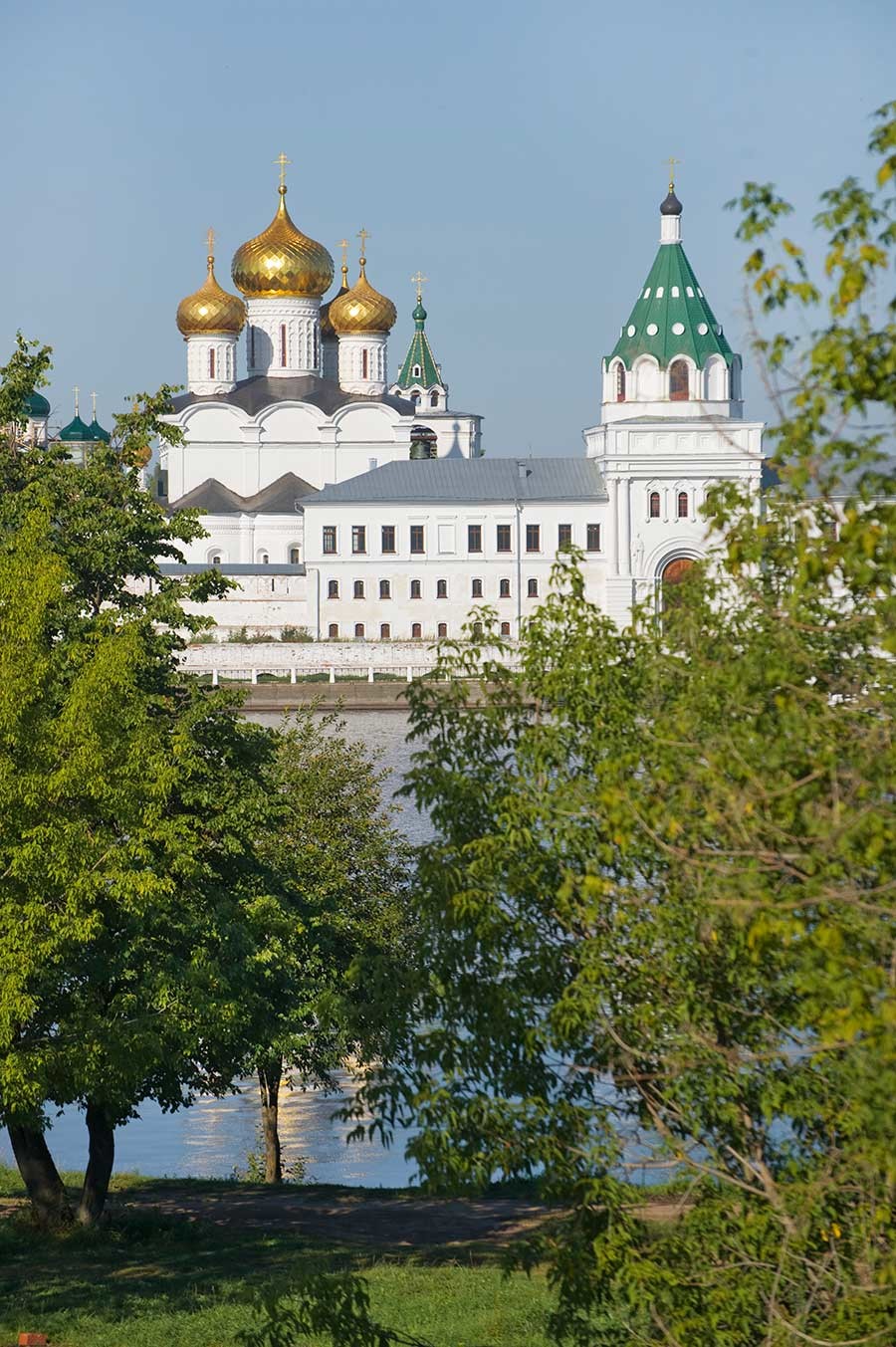
Trinity-Ipatiev Monastery, east view across Kostroma River. From left: Trinity Cathedral; Archbishop's Cloisters with Gate Church of Sts. Chrysanthus & Daria. Aug. 13, 2017
William BrumfieldIn the early 20th century the Russian photographer Sergei Prokudin-Gorsky devised a complex process for color photography. Between 1903 and 1916 he traveled through the Russian Empire and took over 2,000 photographs
If using any of Russia Beyond's content, partly or in full, always provide an active hyperlink to the original material.
Subscribe
to our newsletter!
Get the week's best stories straight to your inbox